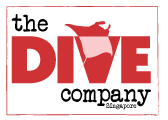
- Why is customized training important?
- Benefits of customized staff training
- Resistance to customized training
According to the American Society for Training and
Development (ASTD), investment in employee training enhances a
company's future
financial performance.
In a study done by Laurie J. Bassi, entitled: ” Profiting
From Learning: Do Firms' Investments in Education and Training Pay Off?
(2000). It was
found that firms investing
US$1,500 per employee in training compared with those that spend US$125
experience an average of 24 percent higher gross
profit margins and
218 percent higher revenue per employee.
Motorola calculated that every dollar spent on customized
training yielded an approximate 30 percent gain in
productivity
within a three-year period. Motorola also used the customized
training to
reduce costs by over US $3 billion and increase profits by
47 percent
(source: Tim Lane et al., "Learning to Succeed in Business with
Information Technology," Motorola).
Nobel Laureate Gary Becker, professor of economics and
sociology at the University of Chicago, was of the view that while
human
capital of employees were a major asset to their companies, it was also
a
depreciating asset that needed continuing investment.
Benefits
of customized staff training:
So far, from the feedbacks given by our clients, the following benefits
have been observed from the customized staff training and team building:
2. Employee performance improvement: Clients reported an improvement in the quality of the solutions generated in response the various problems encountered. They had also reported an increase in customer service satisfaction.
Resistance
to customized training
For managers who are skeptical to customized training
programs due to past experience with little or no returns. We have
found that
when we ask who is to blame for poor performance of employees and
business, the
line managers tend to lay the blame on the human resource department
for the poor
hiring selection. But when you ask the human resource department, they
blame it
on line managers for poor management skills.
Ask us and we would say, the “Axe”.
“What does an “axe” got to do with this?” You might be
asking
Now that we’ve got your attention, Let us tell you a
small story.
Once upon
a time, a very strong woodcutter asked for a job from a timber
merchant, and he
got it. The pay was good and so were the working conditions. For that
reason,
the woodcutter was determined to do his best. His boss gave him an axe
and
showed him the area where he was supposed to work. The first day, the
woodcutter brought down 18 trees “Congratulations,” the boss said.
“Carry on
that way!”.
Very
motivated with the boss’s words, the woodcutter tried harder the next
day, but
he could bring down only 15 trees. The third day he tried even harder,
but
could bring 10 down trees only. Day after day he was bringing down less
and
less trees. “I must be losing my strength”, the woodcutter thought.
He went to
the boss and apologized, saying that he could not understand what was
going on.
“When was the last time you sharpened your Axe?” the boss asked.
“Sharpen? I
had no time to sharpen my Axe. I have been very busy trying to cut more
trees
for you.” – Steven Covey, 7 Habits of Highly effective people
If your employees or staff are working hard without
proportionate results, it is time to examine your employee’s ‘Axe” and
sharpen
it. In today’s highly competitive business environment, the gap between
existing capabilities of employee and required capabilities to compete
in the
market place widens at an exponential rate annually.
As Jack Welch, former Chairman and CEO of General
Electric noted, “if the rate of change inside an organization is less
than the
rate of change outside the organization, their end is in sight.”


